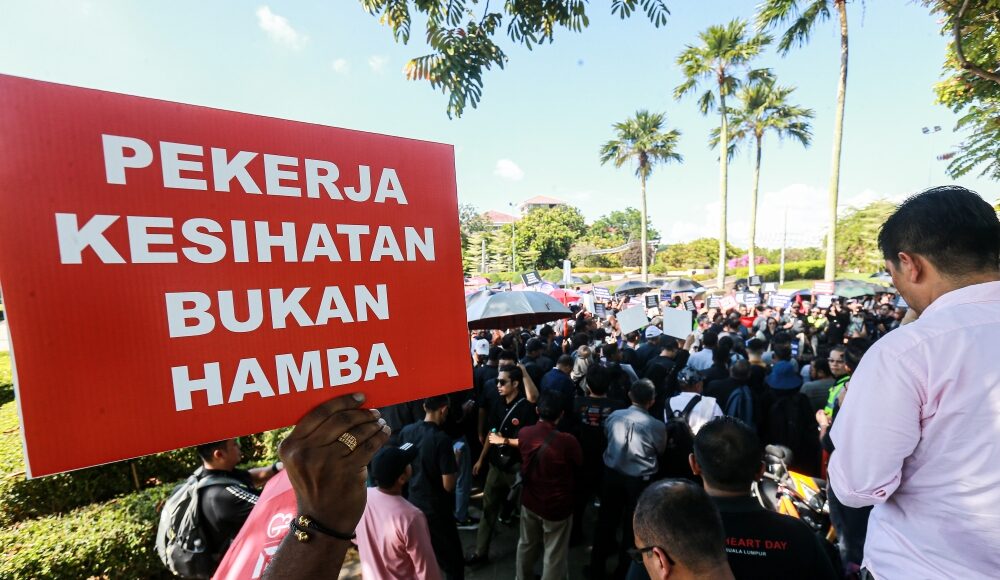MAY 8 — The “mother” of all these “wrongs” is the concept that health care is just another commodity that can be traded in the marketplace. This concept should be rejected in a civilised society because, not only is access to health care a basic human right, but it is also a transaction with a huge asymmetry in knowledge between the provider (the doctor) and the recipient (the patient). More importantly, a decent health care system based on the solidarity of all citizens, and independent of the patient’s capacity to pay, does something indefinable to our sense of ourselves as a nation. It makes us feel that we are a people, enhances a sense of belonging, and contributes to building a more harmonious society.
However, mistakes were made. Private practice was allowed in Malaya even before Independence, and general practitioners (GPs) set up clinics all over the country. They provided a very useful service to the community by making health care more accessible. They also earned handsomely, and GPs were among the wealthiest 10 per cent of the population at the time.
That began to change in the 1980s after Dr Mahathir encouraged the setting up of private, for-profit hospitals. These hospitals also provided outpatient care for any patient who decided to walk in. The primary care system that was the practice in Malaysia before 1980, where a patient had to see a GP or a doctor in the government outpatient department before being referred to a specialist (at that time almost entirely in government service), was supplanted by direct self-referral to private specialists. This trend is accelerating with the proliferation of private hospitals, and the income of the 8,000-odd GP clinics in the country has taken a hit.
GPs also used to have contracts with factories, banks, and government agencies to be listed as one of the doctors on the medical panel of these institutions, which would pay the doctor a pre-negotiated rate for each patient seen by them. The invasion of third-party administrators (TPAs) into this space witnessed many employers switching to TPAs as they offered lower rates. The TPAs, which are large corporations with financial heft, now have the market power to force GPs to accept very low rates on a “take it or leave it” basis.
As a result of these changes, GPs now earn low five-figure monthly incomes or even only high four-figure ones — about five to ten times less than specialists in private hospitals. They now rank in the second or even third decile from the top of the country’s income pyramid when they were in the top decile before. They feel “short-changed.” But really, how much should professionals earn? Sure, they had to work hard to acquire their knowledge and skills, but that knowledge was built on the contributions of many generations of men and women. That knowledge was not developed de novo by these professionals themselves. They have equipped themselves with the collective intellectual and scientific inheritance of mankind to provide us with their medical expertise.
Private doctors marched to pass a memorandum to the Prime Minister’s Office over mandatory drug price display on May 6. — Picture by Sayuti Zainudin
The PSM is proposing that the top income in a society should not be more than ten times the living wage, which in Malaysia today is set at about RM3,200 per month. Anything above ten times that should be seen as a misuse of the skills and knowledge entrusted to professionals to administer the collective wisdom of mankind.
Coming back to the GPs’ march in Putrajaya, the “straw that broke the camel’s back” is the impending enforcement of the requirement to display the prices of medicines. As the medical fee schedule has not been revised for the past 33 years, many GPs augment their income by hiking up the prices of the medicines they prescribe. It is believed there would also be quite a number of GPs who subsidise medicines for their poorer patients but charge their affluent patients more for the same medicines. The enforcement of price display for medicines would make this cross-subsidisation difficult and also impede income augmentation.
Additionally, many GPs only label medicines by writing the symptom they are meant for — “fever,” “cough,” “headache,” or “antibiotic” — without specifying the pharmacological name of the medicines supplied. This is purely a business strategy to prevent patients from buying further doses of the same medicines from pharmacists (many of whom sell prescription items without a prescription). It is difficult to blame any party here, as society has encouraged practitioners (doctors and pharmacists) to treat health care as a commodity. It would be hypocritical now to take the high moral ground and criticise them when they act as businessmen.
But doctors should bear in mind that their stature in society is diminishing. Doctors are still respected, but an increasing number of people are starting to see them as selfish profiteers. This is reflected in the increasing number of litigations involving doctors.
Apart from fighting for better remuneration for doctors, the medical profession should speak up for ordinary Malaysians who experience crowded government facilities, long waiting times, soaring medical costs in the private sector, and financial distress due to the malfunctioning health care system. Doctors should support the demands of the People’s Health Coalition, which include:
- A ten-year moratorium on new private hospitals to stem the massive out-migration of specialists from government hospitals to the private sector.
- The initiation of a capitation scheme that allocates GPs diabetic and hypertensive patients to follow up on, with the Ministry of Health bearing the costs of medicines, investigations, and professional fees.
- An increase in the MOH budget to five per cent of GDP over the next five years to enable the MOH to finance these initiatives, employ more specialists in government hospitals, and expand hospital facilities.
The support of pro-people proposals for health care reform would help rehabilitate the public’s perception of doctors.
We sympathise with the Madani government, as they have inherited a difficult situation arising from poor policy decisions in the past. But it is disappointing to see the Madani government still intent on promoting the Rakan KKM scheme and launching a new voluntary insurance policy. These are steps that further commodify health care and legitimise profiteering.
As mentioned earlier, treating health care provision as just another commodity to be traded is the root of many of the problems faced today. Resolving these issues will take time and must be phased. The genie, once out of the bottle, is difficult to put back. But further commodifying health care is undoubtedly a step in the wrong direction.
The Madani government should step back and take a hard look at income distribution in Malaysia. Currently, only 29 per cent of total national income goes to 97 per cent of the working population, while 55 per cent accrues to corporations and the richest individuals, who make up only three per cent of the working population. The government should seriously study how a portion of the 55 per cent currently being appropriated by the economic elite can be channelled to government coffers through taxes and used to improve the health care system.
* This is the personal opinion of the writer or publication and does not necessarily represent the views of Malay Mail.





